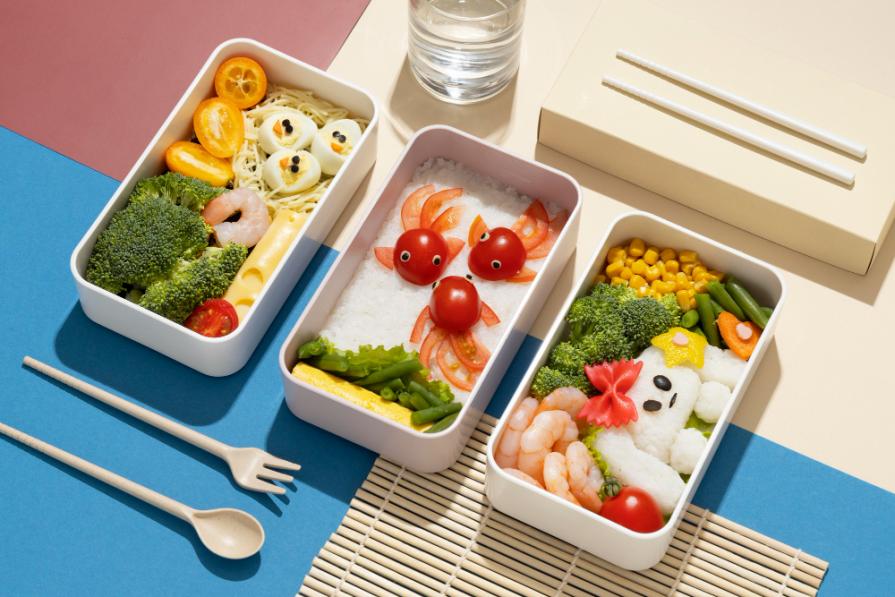Putting together a lunch box for school seems like a simple task, but in fact, more depends on it than it may seem. A schoolchild spends most of the day outside the home, and it depends on food whether he will have enough energy in class, whether he will maintain attention and good mood. Nutrition affects not only the level of energy - it is directly related to the development of the brain, the functioning of the hormonal system and even the formation of habits that the child will carry into adulthood. If a child is taught to choose healthy and varied food from an early age, this will become the norm in the future, which means there is less risk of being overweight, chronic diseases or loss of strength.

What makes up a proper diet
In order for lunch to be truly healthy, it is important to adhere to a few simple principles.

- Whole foods. The less processed the food, the more benefits it has. Vegetables, fruits, whole grains and meat without additives are the basis of a healthy diet.
- Seasonality. In autumn, apples and pears are tastier and healthier than in winter, and in summer, fresh berries contain a maximum of vitamins. If possible, you should focus on seasonal products.
- Protein and fiber. Proteins are needed for cell growth and repair, and fiber helps digestion work and keeps blood sugar levels stable.
- Reading labels. If the product contains more than five lines, and half of them are incomprehensible additives, it is better to look for a replacement.
- Water. The water bottle in the lunch box is just as important as the food itself. Sugary drinks do not quench thirst, but only increase it.
- Balance of fats. Omega-3 and omega-6 are important for the body, but an excess of one and a lack of the other can lead to inflammatory processes. Therefore, it is better to alternate sources of fats - fish, nuts, seeds.
There is another important point: supplements and vitamins. It is not worth giving them to a child without tests and consultation with a doctor, even if it seems that it is useful: the wrong selection can do more harm than help.
How do you know how much food is enough?

It is often difficult for parents to determine how much food to put in a container. A convenient guideline can be the so-called "palm rule", which takes into account the size of the child's own hand:
- vegetables – about the palm of your hand;
- carbohydrate side dish – fist;
- fruits are also a fist;
- protein products – palm size and thickness along the little finger;
- fats, such as butter or nuts, are the size of a thumb.
This approach allows you not to overload the stomach, but also not to leave the child hungry.
Examples of balanced school lunches

Below are a few ideas that can be alternated: they are easy to prepare and put together so that the lunch remains tasty and nutritious.
- Buckwheat with butter, chicken breast, slices of bell pepper and apple.
- Boiled potatoes with dill, beef meatballs, carrot salad and a handful of blueberries.
- Broccoli rice, turkey, pepper and kiwi.
- Vegetable stew, chicken balls, a piece of soft cheese and a tangerine.
- Bulgur with herbs, baked salmon (or other fatty fish), cucumber and arugula salad, bread and pear.
- Parmesan pasta, baked nuggets, tomato salad and sugar-free bar.
- Couscous with corn, liver pate, vegetable salad and homemade muesli bar.
- Whole-grain toast with chicken and cheese, yogurt and some dried fruit.
- Cod with spinach, potato salad and vegetable sticks with hummus.
- Chicken with broccoli, rice with butter, salad with seeds and a handful of nuts.
- Cheese and broccoli cutlets, braised lentils, sauerkraut salad and homemade waffles.
The menu can be swapped, combined, adjusted to the tastes of the child. The main thing is to always have vegetables, a source of protein, some carbohydrates (ideally complex) and healthy fats in your lunch.
Why It's More Important Than It Seems
At first glance, a school lunch is just food in a container. But if you look at it more broadly, it forms a whole system of habits: the child learns to eat a variety of foods, tries different foods, begins to treat food as a source of energy, and not just pleasure. A balanced lunch helps maintain concentration, improves mood, and reduces the risk of overeating after school. Also most importantly, it lays the foundation for health for many years to come!











